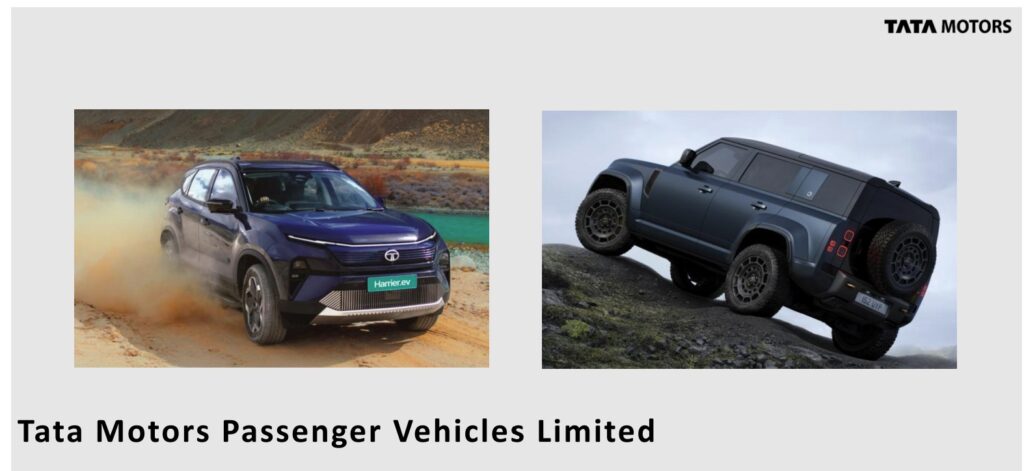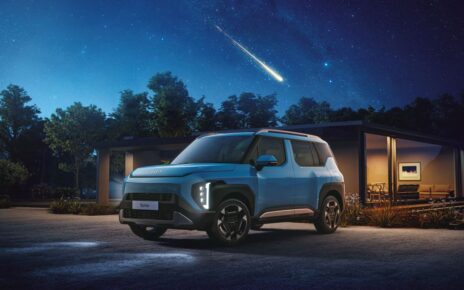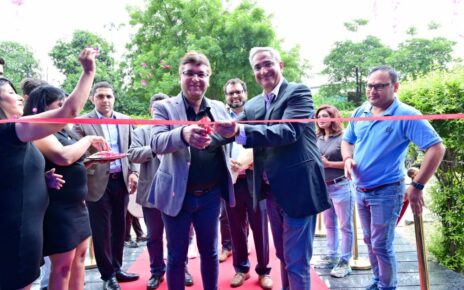Tata Motors Passenger Vehicles Ltd. (TMPVL) reported its financial results for the quarter ended September 30, 2025, posting revenues of ₹72,300 crore, a decline of 13.5% year-on-year, and an EBIT loss of ₹4,900 crore. The company said the quarter was significantly impacted by the cyber incident at Jaguar Land Rover (JLR), which disrupted global operations and weighed heavily on consolidated performance.

Domestic PV operations remained steady through the quarter and picked up momentum after the implementation of GST 2.0. TMPVL reported a PBT (before exceptional items) loss of ₹5,500 crore for Q2 FY26. However, net profit for the quarter stood at ₹76,200 crore due to a notional gain of ₹82,600 crore from the disposal of discontinued operations related to the demerger process. For H1 FY26, PBT (before exceptional items) was at a loss of ₹1,500 crore, down ₹13,900 crore from the previous year.
JLR’s performance was severely affected by the cyber incident, resulting in a 24.3% decline in revenue to £4.9 billion. EBIT margins fell sharply to -8.6%, down 1,370 basis points from last year. All key metrics, including EBITDA, production, and retail operations, were disrupted, though JLR confirmed that production has now returned to normal levels.
On a standalone basis, TMPVL’s revenues grew 15.6%, supported by festive demand and GST reductions. EBITDA margins were 5.8%, down 40 basis points year-on-year, while EBIT margins improved slightly to 0.2%.
Looking ahead, Tata Motors said the global environment remains challenging due to economic uncertainty, supply-chain stress, and geopolitical pressures. The company plans to stabilise production, strengthen supply-chain resilience, and step up brand-led market actions. Domestically, demand remains strong post-GST 2.0, and the company plans to drive growth through new product launches and aggressive marketing interventions.
Mr. P. B. Balaji, Group Chief Financial Officer, said, “It has been a difficult period for the business. However, we are committed to emerging from the cyber incident even stronger. With the demerger completed, both JLR and domestic PV businesses are well poised to leverage the significant opportunities provided by this exciting industry.” He added that domestic demand is showing signs of resurgence and the company will continue to execute its strategy with speed and rigour.
Decline in Profitability
At JLR, the cyber incident and US tariffs contributed to a sharp decline in profitability. For Q2 FY26, loss before tax (before exceptional items) was £485 million, while the EBIT margin fell to -8.6%. H1FY26 revenue stood at £11.5 billion, down 16.3% year-on-year. JLR retained a cash balance of £3 billion, net debt of £1.8 billion, and total liquidity of £6.6 billion, supported by a new £2.0 billion bridge facility and a £1.5 billion UKEF-backed loan secured in October.
The company also introduced a £500 million supplier financing scheme to strengthen liquidity across its supply chain. During production downtime, JLR accelerated testing and development work in electrification, including ADAS testing at Solihull and EMA platform readiness at Halewood—part of its £18 billion investment commitment over five years.
The “Reimagine” transformation continues across product and sustainability fronts. Range Rover was named among Interbrand’s Top 100 Global Brands, JLR unveiled the bespoke Range Rover SV Asilomar, adopted new sustainable Pirelli tyres, and advanced development of new electric Jaguar and Freelander models. JLR also commissioned solar farms in the UK and China to reduce its carbon footprint.
JLR CEO Mr. Adrian Mardell acknowledged the challenges but expressed confidence in the company’s resilience. “The speed of recovery is a testament to the hard work of our colleagues. Production of all our luxury brands has resumed,” he said, adding that JLR is preparing for a significant product wave, including the Range Rover Electric and next-generation electric Jaguar.
Approaching the end of his 35-year career at JLR, Mr. Mardell said leading the company has been “the greatest honour,” and expressed confidence that the next chapter under Mr. P. B. Balaji’s leadership will bring continued success.
For H2 FY26, both Tata Motors PV and JLR expect stronger performance backed by recovering operations, festive tailwinds, product interventions, and cost-saving measures.
Tata PV posts double-digit volume growth in Q2
Tata Passenger Vehicles (Tata PV) delivered a strong performance in Q2 FY26, supported by robust festive demand, GST rate reductions, and strong traction across both ICE and EV portfolios. The company reported revenues of ₹13,500 crore for the quarter, up 15.6% year-on-year, with wholesale volumes rising to 144,500 units — a growth of 10.8%.
Despite facing adverse realisations and higher fixed costs, Tata PV maintained stable profitability. EBITDA margin stood at 5.8%, down 40 basis points year-on-year, while EBIT improved to 0.2%, up 10 basis points. Sequentially, profitability strengthened significantly, with EBITDA improving by 180 basis points and EBIT by 300 basis points. In Q2, ICE vehicles delivered an EBITDA margin of 6.4%, while the EV business recorded a sharp margin improvement to 4.2%, rising 920 basis points year-on-year.
Tata PV’s market performance was one of its strongest to date. Vahan market share stood at 12.8% in Q2 FY26, while EV Vahan market share surged to 41.4%, reinforcing the company’s leadership in electric mobility. The brand secured the #2 position in Vahan market share for both September and October 2025, supported by a sharp reduction in dealer stock and strong festival retail activity.
Festive demand played a major role, with the company retailing over one lakh vehicles between Navratri and Diwali, marking a 33% year-on-year growth. Nexon led the industry as the #1 selling model in both September and October across powertrains, while Punch crossed 40,000 units during the same period. Harrier and Safari achieved their highest-ever volumes, boosted by the newly launched Adventure X variants and strong interest in the Harrier.ev. Punch also set a new industry benchmark by becoming India’s fastest SUV to cross the six-lakh sales milestone in under four years.
Looking ahead, Tata PV expects to sustain its growth momentum in Q3 with a healthy booking pipeline, aggressive festive marketing, and lean inventory management. The company plans to drive further volume expansion through major upcoming launches, including the new Sierra nameplate and petrol variants of Harrier and Safari. Structural cost improvements and a richer product mix are expected to support profitability in the coming quarters.
Mr. Shailesh Chandra, Managing Director & CEO, Tata Motors Passenger Vehicles Ltd., said Q2 FY26 was a landmark period marked by record wholesales, strong registrations, and robust multi-powertrain growth. “CNG and EVs contributed 45% of our volumes in Q2. EV sales surged nearly 60% year-on-year, with close to 25,000 units sold. September was particularly strong with record sales of over 60,000 units,” he said. With rising consumer confidence and an exciting product pipeline, Tata PV expects to carry this momentum into the second half of the year, he added.




